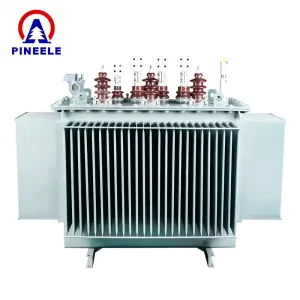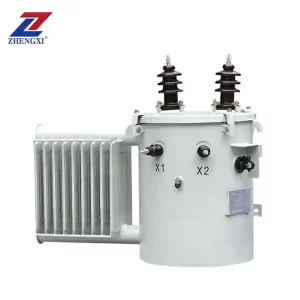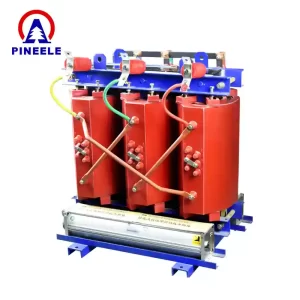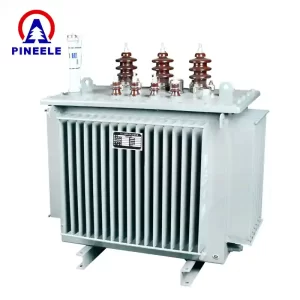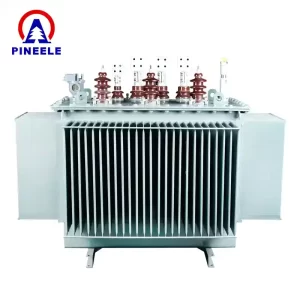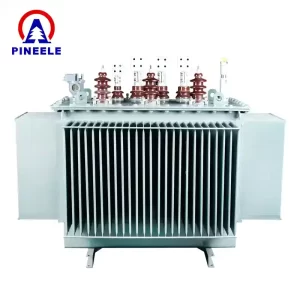Oil filled transformers play an indispensable role in electrical distribution systems, particularly in medium to high-voltage applications where reliability, thermal efficiency, and long service life are critical. This article explores the role of manufacturers in this domain, highlighting key technical features, applications, and guidance for choosing the right oil-immersed transformer based on real-world needs.
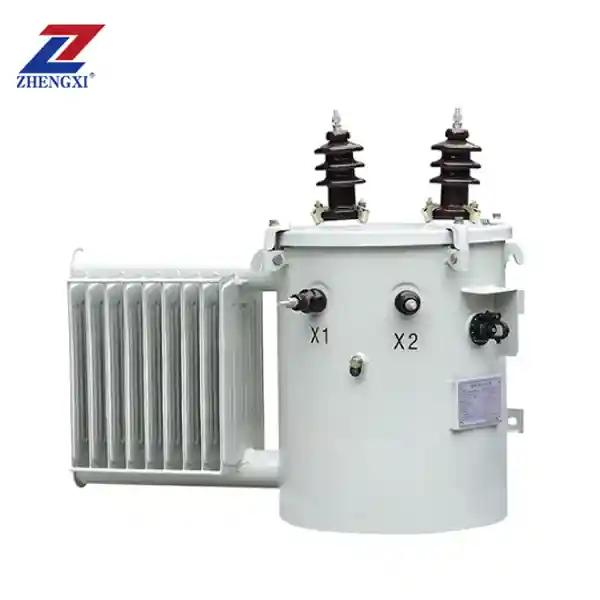
What Is an Oil Filled Transformer?
. oil filled transformer, also known as an oil-immersed transformer, uses insulating oil to both insulate and cool its internal components. The oil surrounds the transformer’s windings and core, absorbing heat and transferring it to radiators or cooling fins. This setup ensures optimal thermal management, especially under heavy electrical loads.
Oil filled transformers are categorized into:
- Distribution Transformers (typically 25 kVA to 2500 kVA)
- Power Transformers (above 2500 kVA, often used in transmission systems)
- Hermetically Sealed or Conservator Type Transformers
Application Areas
Oil filled transformers are extensively used across a wide range of sectors:
- Electric Utilities: Substations and transmission networks rely heavily on large-capacity oil transformers for grid stability.
- Industrial Facilities: Steel mills, chemical plants, and refineries depend on oil-based units for process continuity.
- Renewable Energy: Wind and solar power systems use medium voltage transformers to step up voltage for grid integration.
- Projekty infrastruktury: Airports, hospitals, railways, and data centers require highly reliable power supported by oil filled transformers.
Industry Trends and Market Outlook
The global transformer market is projected to reach over USD 90 billion by 2030, with oil filled units holding a significant share due to their higher efficiency in larger systems. According to IEEMA a MarketsandMarkets, the demand is fueled by growing urbanization, renewable energy adoption, and grid modernization.
Manufacturers are innovating with:
- Biodegradable transformer oil
- Smart monitoring sensors (IoT-integrated)
- Compact design for space-constrained applications
Authorities like IEEE, IECa ANSI provide rigorous design and safety standards, ensuring uniformity across global markets. IEEE Std C57.12.00 is one of the most recognized references.
Key Technical Specifications (Typical Range)
- Rated Power: 100 kVA to 3150 kVA (distribution); up to 500 MVA (power transformers)
- Primary Voltage: 6 kV, 11 kV, 33 kV, or custom
- Secondary Voltage: 400 V, 690 V, or medium voltage
- Metoda chlazení: ONAN (Oil Natural Air Natural), ONAF (Oil Natural Air Forced)
- Temperature Rise: Max 55°C/65°C over ambient
- Insulating Fluid: Mineral oil, synthetic oil, or natural ester
- Protection Grade: IP23 to IP54, depending on installation type
Comparison with Dry Type Transformers
| Feature | Oil Filled Transformer | Suchý typ transformátoru |
|---|---|---|
| Cooling Mechanism | Oil-based (natural/forced) | Air or forced ventilation |
| Power Rating Range | Up to hundreds of MVA | Typically <10 MVA |
| Fire Risk | Higher (requires containment) | Lower |
| Maintenance | Requires oil monitoring | Lower ongoing maintenance |
| Outdoor Suitability | Ideal for outdoor installations | Mostly used indoors |
Notable Oil Filled Transformer Manufacturers
Several global leaders specialize in oil-immersed transformers:
- ABB (Hitachi Energy) – Known for high-voltage, smart-grid-ready solutions
- Siemens Energy – Offers sustainable transformer designs with eco-friendly oils
- Schneider Electric – Strong presence in industrial and urban infrastructure projects
- Toshiba and Mitsubishi Electric – Specialize in power transformers for utilities
- PINEELE – Trusted in Asia and Africa for compact oil transformer designs and cost-effective distribution solutions
- Voltamp, Crompton Greaves, and Bharat Bijlee – Prominent Indian OEMs complying with IEC and BIS standards
How to Select the Right Manufacturer or Product
When evaluating oil filled transformer manufacturers or suppliers, consider the following factors:
- Technical Fit: Ensure the transformer’s ratings align with your system’s capacity, load variation, and voltage class.
- Certifications: Look for ISO 9001, IEC, IEEE, or ANSI compliance.
- Customization: Ability to offer tailored winding materials, vector group, protection, or enclosure ratings.
- Support & Logistics: Timely delivery, spare part availability, and local service centers.
- Total Cost of Ownership: Assess not just price, but efficiency, oil life, and long-term maintenance requirements.
Expert Buying Tips
- For remote outdoor installations, choose sealed-type transformers with anti-corrosion coating.
- For high harmonic environments, request low-loss core materials and enhanced insulation.
- Ask about factory testing certificates (routine, type, and special tests) before shipment.
Frequently Asked Questions (FAQs)
A: With proper maintenance, these transformers can last 25 to 40 years. Key factors include load cycles, oil quality, and environmental exposure.
A: Yes. Dielectric breakdown strength, water content, and dissolved gas analysis (DGA) should be performed regularly to detect internal faults early.
A: Yes, but they must be equipped with anti-rust coatings and breathable silica gel breathers. Stainless steel tanks may be used for extreme environments.
Oil filled transformer manufacturers play a critical role in powering modern infrastructure. Their products are engineered to handle large electrical loads, offer long-term stability, and support evolving grid demands. By partnering with reputable, standards-compliant manufacturers and understanding your site-specific needs, you can ensure reliable power delivery while minimizing operational risks.
Whether you’re upgrading a substation or sourcing a new unit for an industrial facility, an informed choice backed by trusted manufacturers will offer efficiency, safety, and peace of mind.
